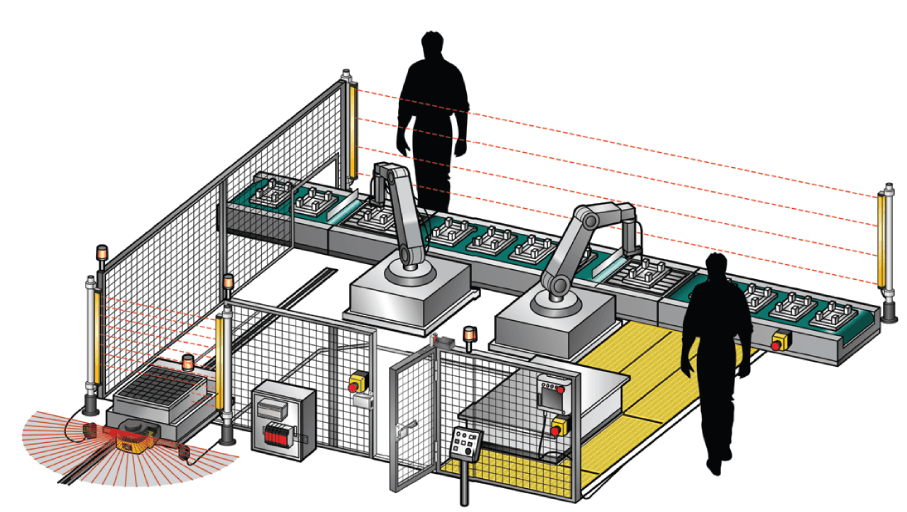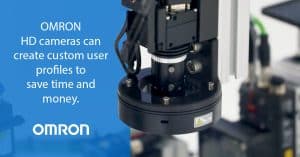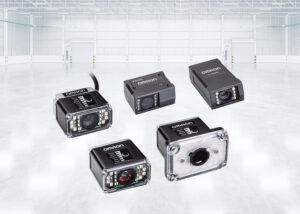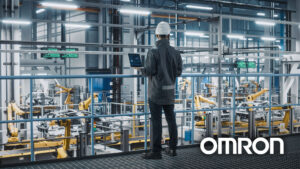 There are a number of misunderstandings about safety that put many facilities – and their employees – at risk for accidents. One reason for the misconceptions about machine safety is due to the large number of older workers retiring with few mid-career workers to inherit their expertise. This trend is causing many industrial facilities to lack the engineering expertise required to ensure that their machines meet modern safety standards. In addition, an increase in the prevalence of newer, fully automated solutions may in some cases lead to complacency, as manufacturers mistakenly believe that their new systems must be compliant.
There are a number of misunderstandings about safety that put many facilities – and their employees – at risk for accidents. One reason for the misconceptions about machine safety is due to the large number of older workers retiring with few mid-career workers to inherit their expertise. This trend is causing many industrial facilities to lack the engineering expertise required to ensure that their machines meet modern safety standards. In addition, an increase in the prevalence of newer, fully automated solutions may in some cases lead to complacency, as manufacturers mistakenly believe that their new systems must be compliant.
10 Machine Safety Myths:
Myth #1: If a machine is brand new, then it must be compliant. OEMs have no legal obligation to include safety measures on their machines. This is usually due to cost considerations, as safety products and compliant solutions may make the OEMs less competitive in the market. Furthermore, safety usually isn’t a core a core competency of these companies, so they avoid designing safety solutions that they have little expertise in. All of this means that safety measures have become the responsibility of the end user.
Myth#2: Safety is too expensive, and it reduces productivity and efficiency by adding extra steps to key processes. The costs of an accident include not only fines and workers’ compensation, but also lost productivity due to poor morale. To address the effect of safety measures on overall productivity, it’s important for manufacturers to note that safety measures can be designed in ways that don’t impact the efficiency of the machine.
Myth #3: Good administrative controls and comprehensive employee safety training can replace good engineering. Thinking along these terms can put employees in harm’s way. The foundation of machine safety consists of a hierarchy of controls published by the National Institute for Occupational Safety and Health (NIOSH), which lists administrative controls and personal protective equipment (PPE) as the least effective ways to mitigate risk. Physically removing the hazard (“Elimination”) and replacing the hazard (“Substitution”) are the most effective measures, but these can be impractical.
Myth #4: Older machines can be “grandfathered in,” so they don’t need safeguarding. No equipment is exempt from current machine guarding standards, and so-called “grandfather clauses” simply do not exist for machine safeguarding. An exemption does exist under some robot standards, and it applies to a robot’s safety circuit integration. This very narrow exemption has led to some confusion as manufacturers mistakenly interpret it to apply more generally.
Myth #5: There are machine safeguarding exemptions for smaller companies. This is false. All companies are required to safeguard their machines properly and protect the lives and safety of their employees. What may depend on company size is the amount a company is required to pay in case of a safety violation. In general, regulatory agencies see enforcement actions as way to motivate compliance, rather than simply functioning as punitive measures.
Myth #6: When several machines are identical, it’s only necessary to do a risk assessment for one of them. This is not necessarily true; it depends on the complexity of the machine. Even seemingly insignificant differences between machines and their positioning relative to one another could change the outcome of a risk assessment. For instance, the addition of a small step to one of several otherwise identical machines could be sufficient to place a worker in harm’s way.
Myth #7: If a machine was assessed for risk before it was moved to a new location, there’s no need to do another risk assessment. Moving it to a new location could create a requirement for a new risk assessment. When assessing access to a hazard on a machine, Omron’s safety experts uses a system known by the acronym “AUTO” to determine whether an employee can reach around, under, through or over a safeguarding measure to reach a hazard area. When a machine is first assessed in its original location, there may have be a wall or another structure blocking access to part of it. Once it’s placed in a new location, the immediate surroundings may not block access in the same way, giving employees have unrestricted access to the hazard.
Myth #8: A gate using a padlock to prevent access is an acceptable and sufficient safety measure. This is false. Movable guards providing protection against hazards need to be interlocked to signal the apparatus to stop. Fixed guards should be securely held in place either permanently (by welding, for example) or by means of tamper-resistant fasteners that make it impossible to open the guards without using tools that aren’t readily available to operators on the manufacturing floor. Since the guards must never remain closed without their fasteners, a gate must be fastened shut or interlocked.
Myth #9: Performance requirements for safety measures stop at the wire. This misconception has to do with the ways in which various energy sources must be safeguarded. Many manufacturers believe that safeguarding is only necessary when the energy source is electrical. As it turns out, all hazardous energy sources need to be “single-fault tolerant,” including hydraulic and pneumatic sources.
Myth #10: Safety is something you can just take care of once and then forget about. This is completely false. Safety is an ongoing requirement, and companies must have regular risk assessments performed on their machines to ensure that they meet the most recent safety standards. Standards evolve with the purpose of making workplaces safer, and it’s imperative for manufacturers to stay up to date and protect their employees.
We hope that this white paper clarifies not only the need for regular risk assessments, but also the importance of seeing past the common safety misconceptions to understand what’s actually needed to protect workers in manufacturing environments. When it’s not feasible to completely remove a hazard, manufacturers must put the appropriate engineering controls in place to isolate the danger source from the operator. There’s no justification for cutting corners in this situation, and it’s not worth the risk (and financial penalties) of a serious on-the-job accident. A robust and frequently updated safety solution is always a worthwhile investment.
Download the Omron whitepaper >>>
To learn more about Omron safety products, visit automation.omron.com. Or contact an MSI TEC engineer for help with your project.








